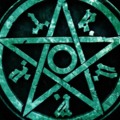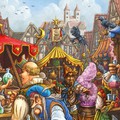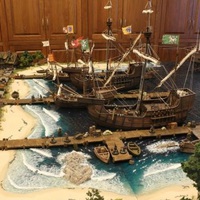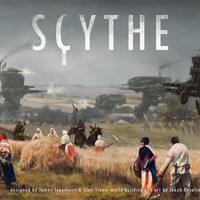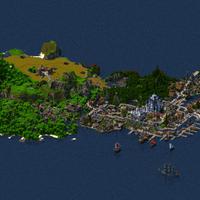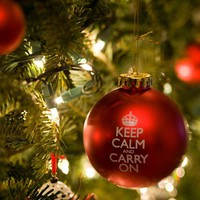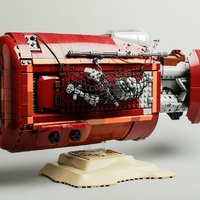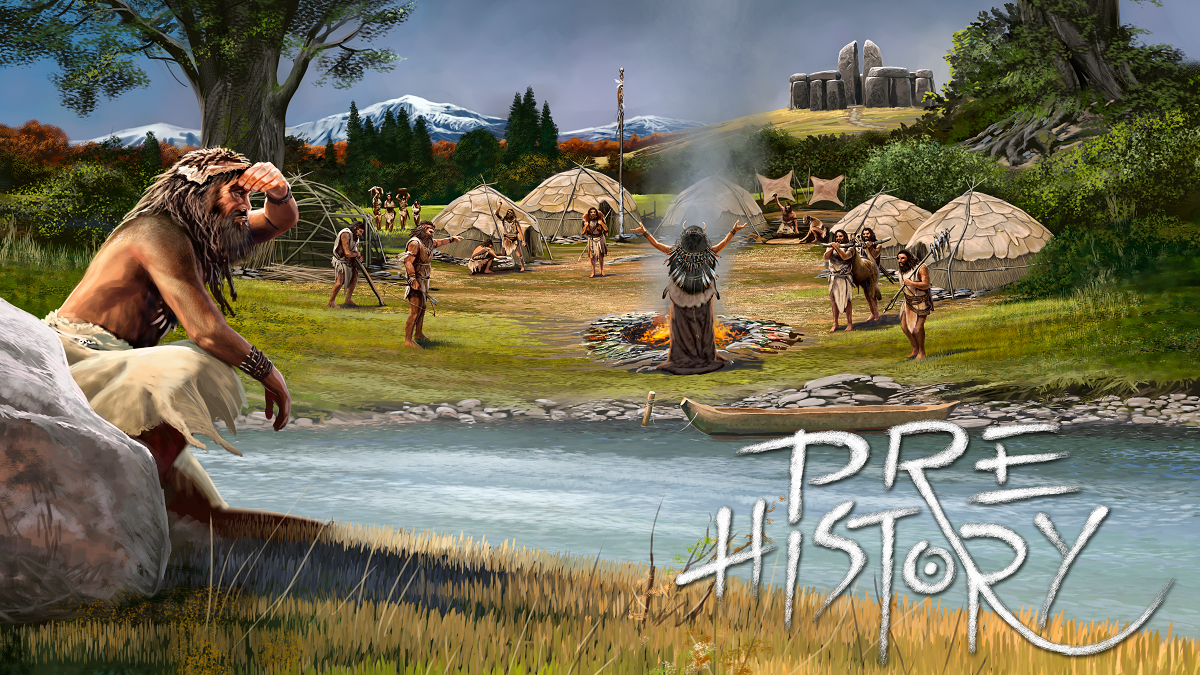
We started our review of Ave Roma with the phrase “A lot of options while keeping luck at a minimum” back in those days when its Kickstarter campaign was launched. It seems the above sentence could be a trademark of Attila Szőgyi as it stands true for his second big box game Prehistory as well.
Prehistory is a complex, mid-weight strategy board game in which the players are controlling and developing their own tribe in the stone age. As mentioned above it’s a big box game with a whole bunch of components including a main board, a modular map, tiles, various tokens, cards and wooden meeples, cubes and other components.
The gameplay itself brings a lot of unique and innovative mechanisms to the table but first of all you need to spend some time to explore its depth to be able to truly enjoy it.
In case of eurogames (yes, Prehistory is definitely one of them) table presence is not the most important thing - however you don’t mind if it looks good, do you? Fortunately there’s nothing to worry about here: not just the cover but the in-game illustrations and components are nice, symbols are straightforward (you don’t need to read the rulebook every time you want to do something during the game), everything has its own place.
The game needs a lot of table space - be prepared three players can barely fit their stuff on a normal dining table and probably you’ll need ask each other’s help to reach every corner of the play area which includes the main board, the player boards and a pre-built modular map. There are a whole bunch of action locations where you’ll need to act and it’s always depending on the current season what you can do and how you can collect victory points.
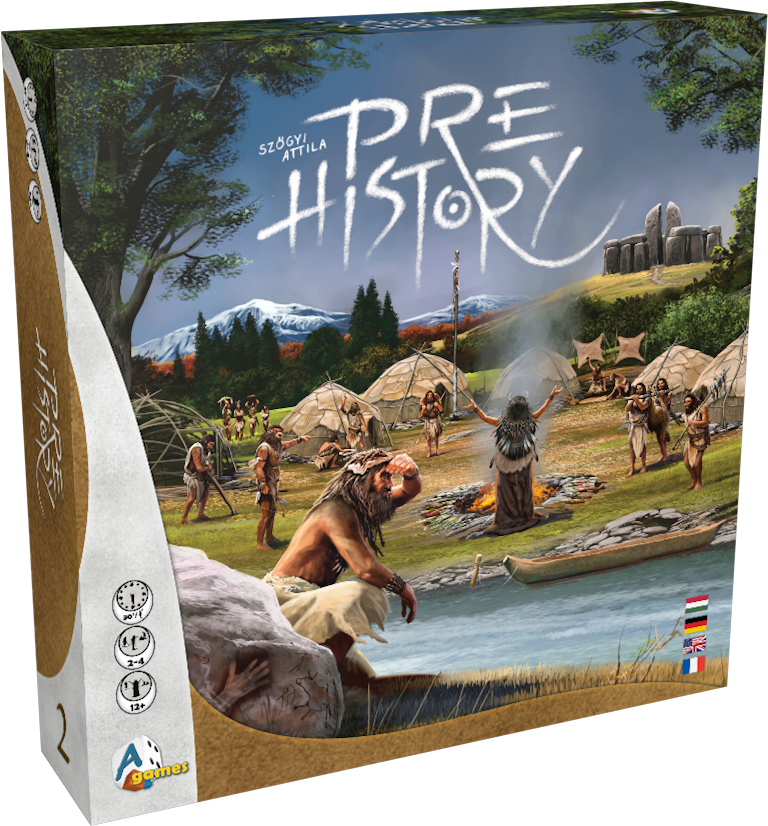
Talking about victory points: Prehistory is a typical point salad game (we feel “some” Feld influence here) where you can score points on the VP track on the main board by almost every action you take during the game and there’s also some final scoring at the end of the game.
The gameplay is not overcomplicated however it mixes various game mechanisms and there’s a lot going on - especially (and this is the main point of the game) when you need to think about how to allocate your resources and action markers both represented by the same wooden cubes. Let’s see how it works!
Seasons of the Stone Age
Prehistory lasts five rounds and in each round you’ll go through four season phases. In winter you’ll reseed the board and determine the player order, in spring you’ll do your actions using your available resources, in summer you’ll spend your action markers to do the same kind of actions again, in autumn you will move your people around the map.
It’s a common thing in eurogames you have both resources and action markers but Prehistory treats its colorful wooden cubes in a very special way. You can take actions on the main board during spring and summer but in two very different ways.
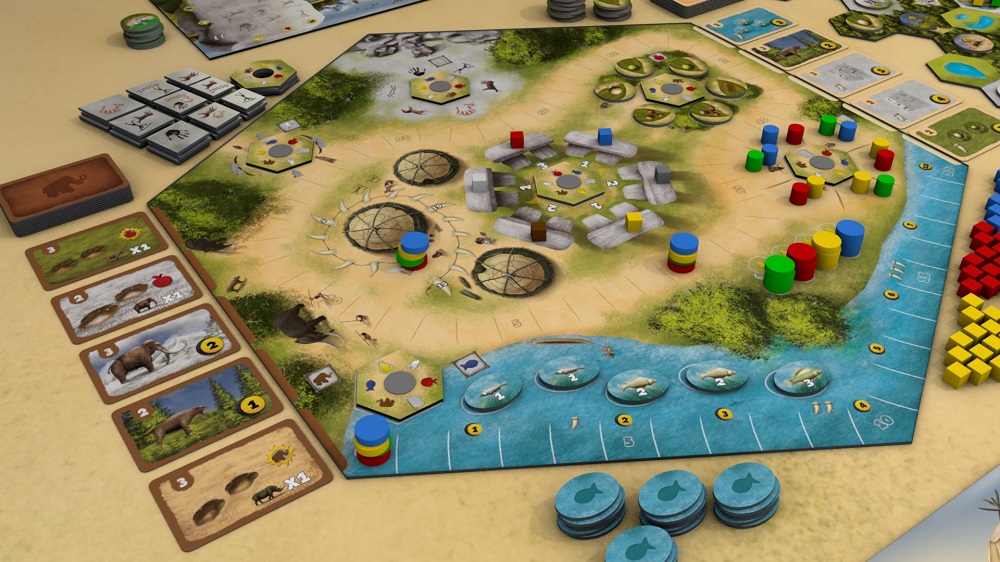
When it’s spring firstly you’ll gain some of the six available resources depending on what your hexagonal weather tile shows on your player board. On the players’ turn they can spend their cubes to take actions at one of the six locations of the main board. Each location has a symbol which corresponds to the color of the cubes and also there’s a pricing tile with the same kind of symbols. During spring on one hand you’ll need to spend resources according to the pricing tile to take the action(s). On the other hand you’ll need to pay one extra resource to the central area of the main board to one of the available Stonehenge-kind footing which belongs to that specific action (the central pricing tile will determine which pillars will belong to which action) - if both footings are already occupied by wooden cubes you cannot take the action during this spring!
When spring is done, summer comes and all the cubes from the footings are pushed up to the top of the pillars - and
they’ll become action markers!
At the beginning of the summer phase in reverse turn order each player collects all cubes of a single pillar and puts them to the action marker area marked with a sun icon just below the rock painting area. During summer you’ll go through all six action locations starting with rock painting where you can spend your available action markers starting with the first player. Keep in mind you can spend only the corresponding action marker at a specific location, pricing tiles are not considered at all this time! This means even if you couldn’t take a necessary action during spring you’ll have another chance to do so during summer if you collected the right action markers previously.
In autumn you’ll move your people on the map by spending your resources left (their movement point value is determined by the central pricing tile). Moving the tribe members is also very important because you can get extra action markers, collectible stuff and even straight VPs this way. To do so you’ll also need to build camps wisely to make sure you control certain locations of the map (surprise: you can get points for that, too!) and also you can grow the population of the tribe this way.
Let’s go back to the main board and talk about the six action locations!
The first one belongs to rock painting. Here you can gain specific paintings which are corresponding to the ones on the rock painting tiles. If you successfully gain a tile you need you can put it on your player board to its designated place. If the new painting tile shares a vertical and/or horizontal border of an already painted section you’ll get the reward indicated on the specific column and/or row. Also, rows and columns will score points at the end of the game.
At the next location you can gather fruits and berries. If you do so you’ll need to put the token to corresponding basket on your player board. The baskets are paired vertically which is important because if you have a new pair you’ll get the action markers indicated on the baskets. Also, the more of the same kind of fruits and berries you gathered the more VPs they’ll score you at the end of the game!
The third location is where you can perform ceremonies. During setup you have to put three shamans around the fire. If you take this action you need to make them… dance! This means to move their marker around the fire if it’s spring by paying resources dictated by the pricing tile (during summer you’ll just spend yellow cubes here). The more you move them the better ceremony card you can get which are essentially point scoring objectives but also they can provide you some developments points instantly. In addition to this, the order you take this action during the round will determine the player order for the next round.
The fourth location is about fishing. The bigger (size is numbered from 1 to 3) fish you catch the more you can move on the fishing track. Depending where your fishing marker is you will get victory points and development points at the end of each summer phase.
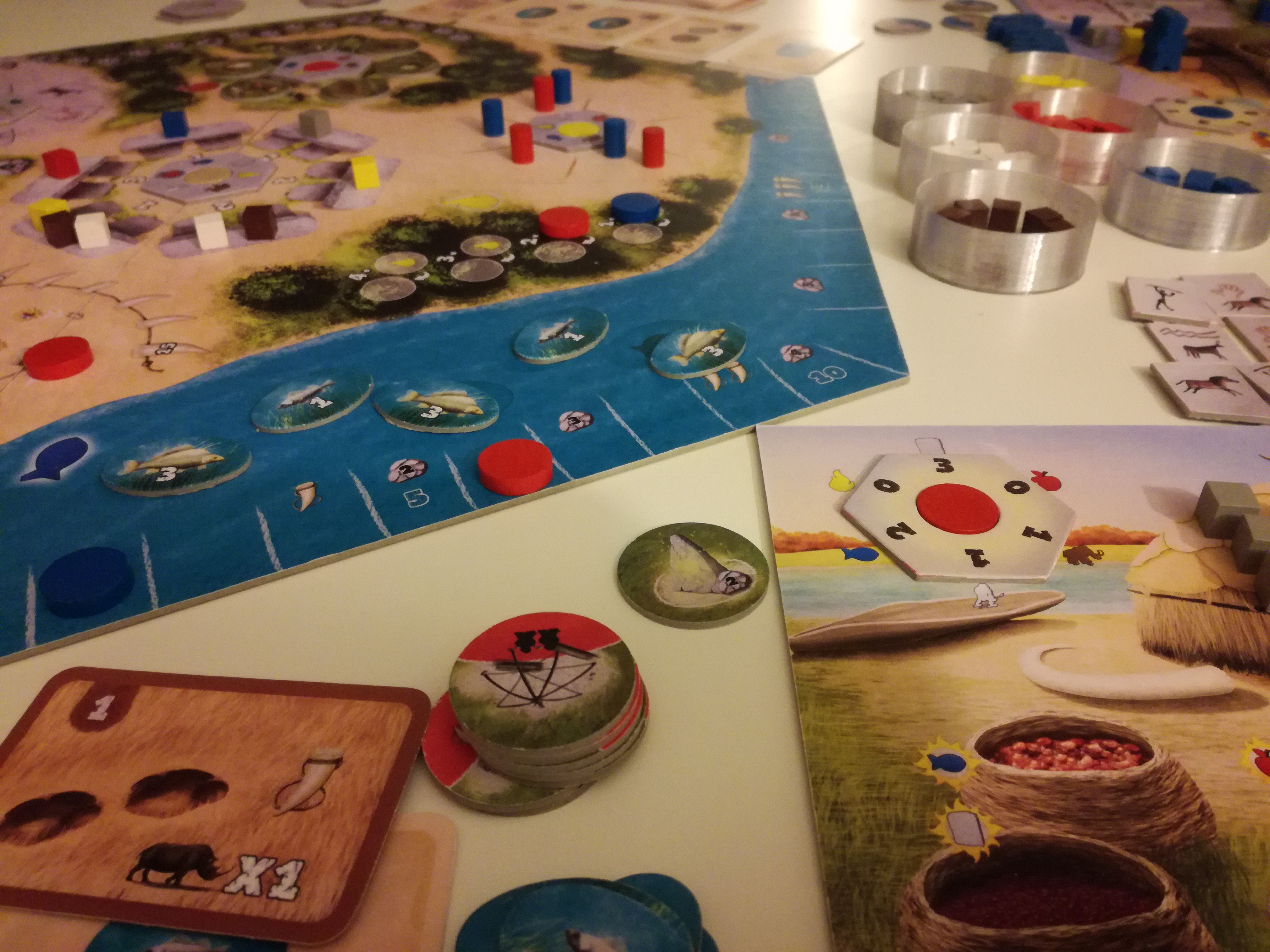
Next to the fishing location you can go for some hunting, too. Here you can get two different types of hunting cards. Animals will score you straight points, that’s easy. Footprints are more trickier as they’ll provide development points/resources/action markers when you get them and also if you get the same type of a footprint again! In addition, at the end of the game you’ll get the all the victory points provided by the animals multiplied by the number of footprint cards belonging to them.
The last location belongs to migration which allows you to put your tribe meeples available from your player board to the map. You can spawn them to the starting camp or your very own campsites, too.
In addition to the normal action locations you can spend your development points to do various things. This way you can manipulate pricing by rotating the pricing tiles of the six action places, make your people to do additional movements on the map and also you can gain resources and action markers (action markers can be converted to development points, if needed).
About luck
As you can see luck is present in Prehistory at some level which is fine. The cards, fishing and gathering tokens are all luck dependent as well as the rotatable pricing tiles (we loved the wooden disks you can rotate the tiles around - veeeery euro-y!). Fortunately (ha-ha!) you can mitigate the pricing luck by spending development points to make the tiles rotate so if you REALLY want to do something (e.g. paint in spring) you’ll have the chance.
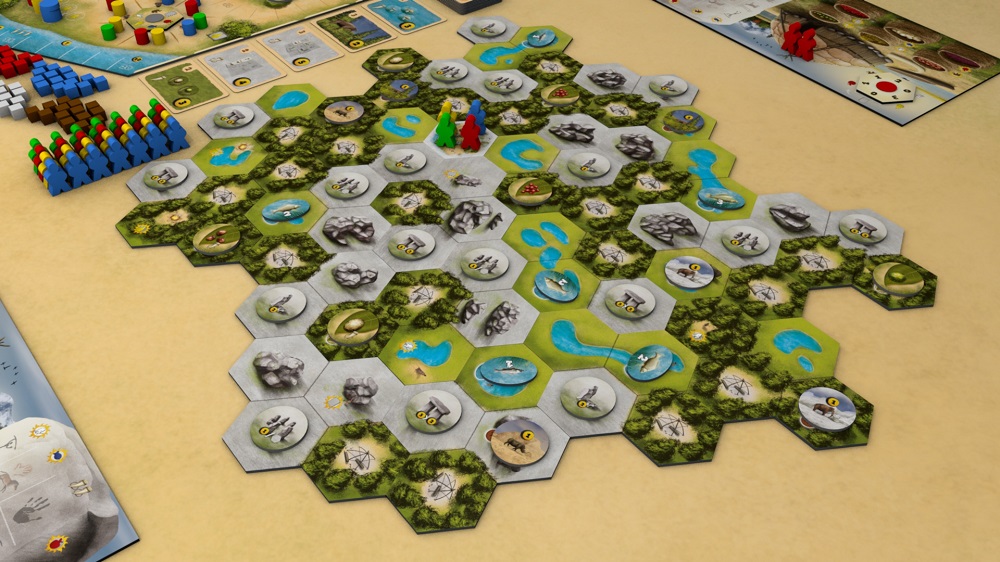
Final thoughts
If you like Attila Szőgyi’s previous Kickstarter success called Ave Roma you’ll probably enjoy Prehistory, too. It’s a true brain burner which requires a lot of forehead planning but also you’ll need to react to the game on tactical level. Because of the number of options you’ll always have stuff to do and using the resources and action markers wisely can open you paths to really cool combos.
Prehistory is enjoyable for all player counts (as a reminder: it’s playable by 2-4 players) but it’s worth to mention there’s a bigger race for action spaces, cubes and turn order in a 3-4 player game.
All in all, we definitely recommend Prehistory to those experienced players who don’t mind if a game has a steeper learning curve: however the gameplay is not overcomplicated you’ll need to pay attention to a lot of things on the board. Getting used to it will require some time but it’s rewarding!
Translated by Lehel Kovács.
Ezt a cikket magyarul is elolvashatod, itt.
A bejegyzés trackback címe:
Kommentek:
A hozzászólások a vonatkozó jogszabályok értelmében felhasználói tartalomnak minősülnek, értük a szolgáltatás technikai üzemeltetője semmilyen felelősséget nem vállal, azokat nem ellenőrzi. Kifogás esetén forduljon a blog szerkesztőjéhez. Részletek a Felhasználási feltételekben és az adatvédelmi tájékoztatóban.
Kommentezéshez lépj be, vagy regisztrálj! ‐ Belépés Facebookkal

